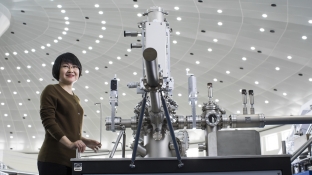“As the International Year of Light celebrates science and knowledge all over the world, the L’Oréal Foundation and UNESCO will present, on March 18th, the L’Oréal-UNESCO For Women in Science Awards to five outstanding women scientists and 15 grants to promising young researchers. Each of these women is a brilliant example of scientific excellence. They prove everyday that women can greatly contribute to scientific progress in a field still largely dominated by men.”
 This year’s 5 Laureates of the L’Oréal-UNESCO For Women in Science Awards are being honored for their ground-breaking discoveries in the physical sciences. By studying the infinitely large to the infinitely small, they have pushed back the frontiers of knowledge to explain the most fundamental questions of the universe and contribute to solving some of today’s greatest challenges. Passionate in life as much as in their work, they are also committed to giving back to their communities and transmitting their love of science.
This year’s 5 Laureates of the L’Oréal-UNESCO For Women in Science Awards are being honored for their ground-breaking discoveries in the physical sciences. By studying the infinitely large to the infinitely small, they have pushed back the frontiers of knowledge to explain the most fundamental questions of the universe and contribute to solving some of today’s greatest challenges. Passionate in life as much as in their work, they are also committed to giving back to their communities and transmitting their love of science.
| • | Yi Xie – Inorganic Chemistry |
| Professor, University of Science & Technology of China, Hefei, CHINA | |
| • | Rajaâ Cherkaoui El Moursli – High Energy Physics and Nuclear Physics |
| Professor, Mohammed V- Agdal University, Rabat, MOROCCO | |
| • | Dame Carol Robinson – Physical Chemistry – Mass Spectrometry |
| Professor, University of Oxford, UNITED KINGDOM | |
| • | Thaisa Storchi Bergmann – Physics and Astronomy |
| Professor, Federal University of Rio Grande Do Sul, Porto Alegre Brasil | |
| • | Molly S. Shoichet – Polymer Chemistry |
| Professor of chemical engineering and applied chemistry, chemistry and biomaterials & biomedical engineering, University of Toronto, Canada |
Prof. Yi Xie is being honored for her significant contributions to creating new nanomaterials with promising applications in the conversion of heat or sunlight into electricity. Her work will greatly contribute to lessening pollution and boosting energy efficiency, and will open promising prospects for the future. Committed to preserving our planet, she has dedicated her life to finding new and intelligent solutions to address the environmental challenge.
Additional information and visuals are available on: http://en.unesco.org/
Prof. Yi Xie is the Associate Editor of Inorganic Chemistry Frontiers; see below her recent publications on Royal Society of Chemistry journals.










